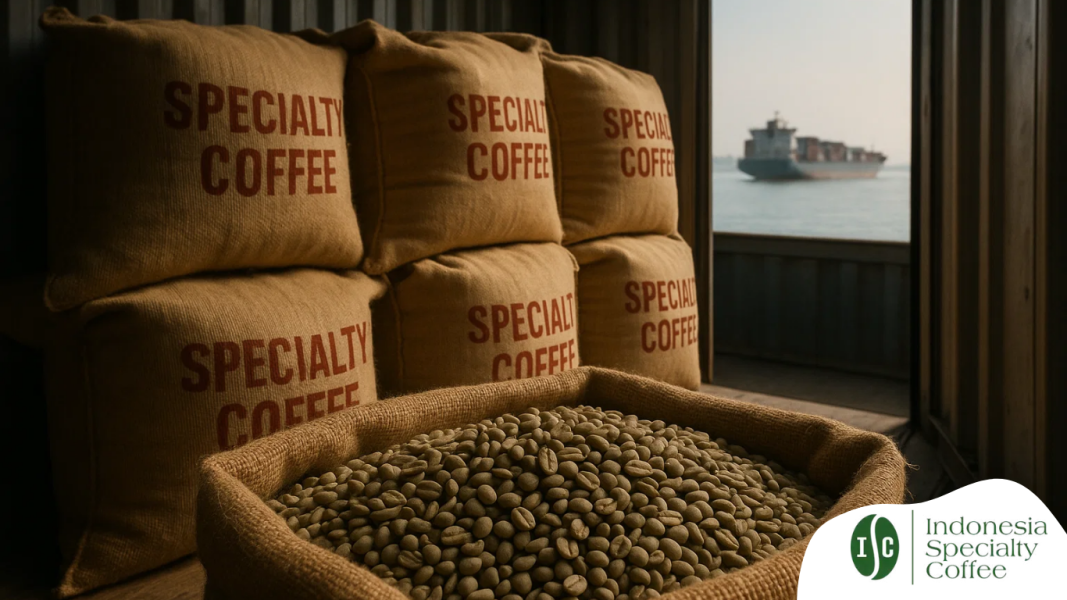Have you ever wondered why your favorite specialty coffee sometimes tastes vibrant and lively, while other times it feels flat and lifeless? Often, the difference isn’t the farm or roast—it’s green coffee transport and storage.
Imagine a farmer in Huehuetenango, Guatemala, carefully drying washed Arabica beans under the sun. Those beans then travel thousands of miles by sea to a roaster in Europe or Asia. During that journey, every temperature fluctuation, every shift in humidity, silently shapes the flavor you’ll taste in your cup.
In this guide, we’ll explore the science behind transporting green coffee beans, insights from cutting-edge research, and practical tips for ensuring your beans arrive in peak condition.
Why Green Coffee Transport Quality Matters
Green coffee isn’t just a raw commodity—it’s a living product. The water activity, volatile organic compounds (VOCs), and free fatty acids (FFAs) in each bean determine its freshness and flavor potential. If the journey from farm to roaster is mismanaged, even the finest Sumatra or Aceh Gayo beans can lose their character.
Our recent study on coffee storage revealed that beans kept at 20°C age faster, with aroma and taste dropping significantly after just three months. In contrast, beans stored at cooler conditions (10°C or even -10°C) maintained their specialty-grade cupping scores for up to nine months.
The Journey of Green Coffee Beans
Every bag of green coffee takes a long journey before reaching your local coffee shop. Understanding this journey is the first step to protecting quality:
- Processing at Origin
Beans are processed using either washed (wet) or natural (dry) methods. Washed beans tend to have lower FFAs and maintain cleaner flavor profiles during long transport. - Packaging for Transport
- Jute Bags: Traditional and breathable, but allow moisture and oxygen to interact with beans.
- GrainPro Bags: Hermetic, multi-layer polymer bags that protect against mold, insects, and moisture.
- Ocean Freight and Storage
Most green coffee is shipped by sea, exposing it to temperature swings and humidity changes. Without proper control, oxidation and microbial activity can ruin the beans’ sensory quality.
Science-Backed Insights for Green Coffee Transport
The Coffee Storage Quality Study provides actionable insights for roasters and importers:
- Temperature is King
Beans stored at 20°C aged quickly, with aroma loss and a rise in unpleasant compounds like Hexanal and (E)-2-Nonenal, which impart woody or rancid notes.- At 10°C and -10°C, beans maintained aroma and water activity levels within specialty-grade standards for up to 9–12 months.
- Water Activity (WA) Stability Matters
- Optimal WA: 0.45–0.65
- Beans in jute bags at 20°C often dropped below 0.45 after six months, losing freshness.
- GrainPro helped stabilize WA, making it ideal for long transport.
- Free Fatty Acids (FFAs) and Flavor Loss
- FFAs rise when cell membranes break down, leading to stale flavors.
- Cooler storage and washed processing significantly slow FFA increase, preserving cup quality.
Best Practices for Shipping Green Coffee Beans
If you’re an importer, roaster, or micro-lot enthusiast, here’s how to safeguard your investment:
1. Choose the Right Packaging
- Use GrainPro or similar hermetic bags for international shipping.
- For short-term, inland transport, jute bags are acceptable—but never for long-term ocean freight.
2. Control Temperature and Humidity
- Aim for 10–15°C storage before, during, and after transport.
- Avoid storing beans in warm warehouses or metal containers exposed to direct sun.
3. Monitor and Rotate Inventory
- Implement a first-in, first-out (FIFO) system.
- Cup samples every 3 months during storage to check for flavor degradation.
For a deeper look at how storage conditions impact flavor, see our guide on extending the life and aroma of coffee beans.
The Role of Green Coffee Transport in Specialty Coffee
Your favorite coffee shop’s espresso might come from beans harvested 8–12 months ago. The difference between an award-winning cup and a dull brew often lies in how those beans traveled.
Just like fermented coffee beans, which require precise handling to preserve their unique profile, green coffee transport is both an art and a science. When managed with care, the journey from farm to roaster becomes invisible—leaving only the coffee’s true character in your cup.
Final Sip: Can Your Coffee Survive the Journey?
Green coffee transport is the invisible bridge between farm and cup. By controlling temperature, packaging, and storage, we can preserve the delicate flavors that farmers worked so hard to cultivate.
Next time you sip a perfectly balanced pour-over, ask yourself: How many hands, bags, and containers did these beans pass through before reaching me—and who protected their journey?
If you’re looking to level up your coffee game, explore our guides on brewing better coffee at home and selecting the best green beans for your shop.
Source : Effect of green and roasted coffee storage conditions on selected characteristic quality parameters





